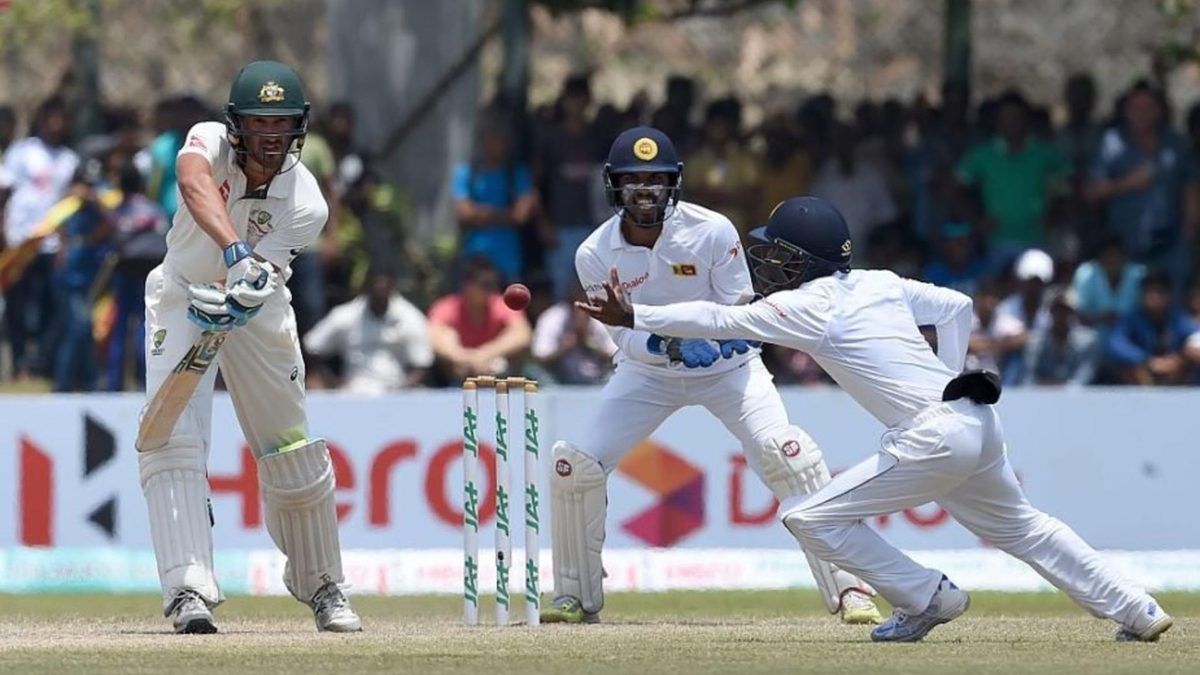
Using cutting edge CricViz data, Ben Jones reveals five key reasons why Sri Lanka are capable of causing an upset in Australia when the two-match Test series commences on Thursday, January 24.
Sri Lanka arrive in Australia as afterthoughts. That is not a slight against their hosts, who have had more than enough to think about in the last nine months. It’s not a slight against the media, who are justified in focusing on this Indian side, the world’s best team achieving something truly historic. And it’s certainly not a slight against Sri Lanka.
Yet Dinesh Chandimal’s side have won all of their last three Tests against Australia. Of course, those matches took place in home conditions – the pitches in Colombo and Galle a far cry from Canberra and the Gabba – but it’s remarkable how quickly this has been forgotten.
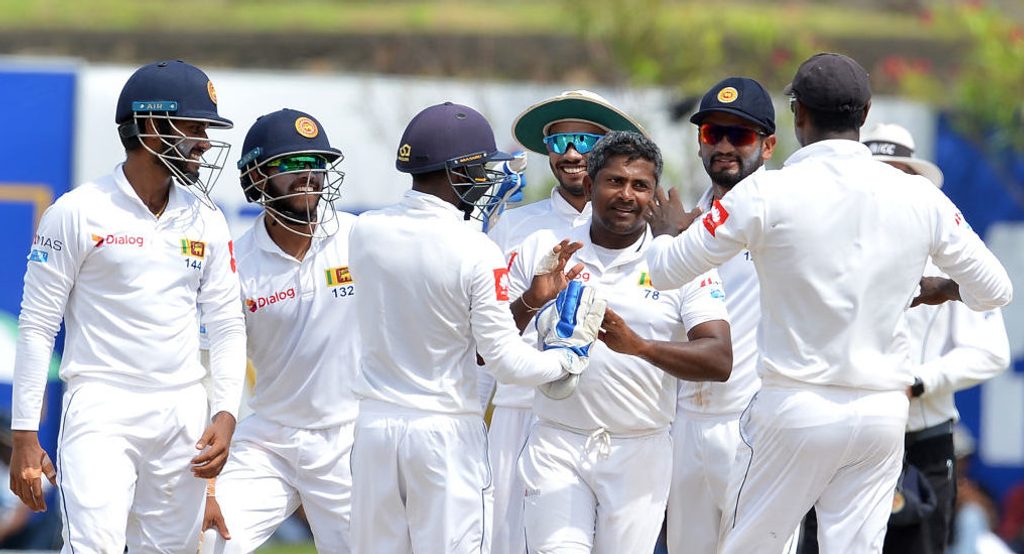 They’re without the retired Rangana Herath, but do Sri Lanka have more than a puncher’s chance in Australia?
They’re without the retired Rangana Herath, but do Sri Lanka have more than a puncher’s chance in Australia?
Equally, Australian cricket hasn’t been at a lower ebb in the last 30 years. Whilst the bowling line-up still has something of an aura, the gulf in ability between the two batting line-ups is not that great. A combined top seven may include more Sri Lankans than Australians. The tourists may struggle, they may thrive, but right now, if it’s a match involving Aussie cricketers, it’s an unpredictable affair.
So, let’s put aside the idea that Sri Lanka are no-hopers. They can win this series, and would be doing themselves a disservice if they didn’t try to eek out every fine margin to try and sneak a Test victory through the back door. So here are are the five ways – according to CricViz data – that Sri Lanka can compete in these two matches.
Bowling plans
Usman Khawaja is Australia’s best batsman. He’s their most attractive stroke-maker, their most substantial run-scorer, their most likely candidate to step into the void left by his former teammates. Yet asked to step up this summer, he’s not been up to the task, and Sri Lanka will be eager to keep his subdued run going.

For the spinners, it’s tough, because Khawaja is famously strong against slow bowling in Australia. However, there is a chance to get one over on him – but the key is in the detail. If you are going to bowl spin to Khawaja you have to have the ball turning away from him, i.e. an off-spinner or a left-arm wrist spinner.

If you’re going to bowl pace at Khawaja, it’s better to err on the side of being too full rather than too short. He is an extremely competent puller (averaging 161) and cutter (averaging 122), and dropping your length back will be punished. Turn it away from him – and don’t drop short.

In the last decade, the average opener is dismissed every 72 balls against seamers with the new ball in Australia. So far in his career, Marcus Harris has recorded a figure of 93.3, and that was against an extremely good Indian bowling attack. He is a young man of clear talent when it comes to seeing off the first hour.
Against seamers, Harris has only been dismissed by balls above 140kph, which means touching the upper end of the speed gun could be vital in removing the Australian openers, with Lahiru Kumara the most likely candidate. Raw pace is needed.
Tim Paine is an effective lower-order batsman. Australia’s tail is in no way a weakness, but the ability of Paine to bind together the two halves of his batting line-up is significant – but he struggles against pace. Indeed, he’s dismissed almost twice as often when facing pace rather than spin.

Interestingly, Paine is extremely good against balls on his stumps. He averages 42 against balls from seamers that would have hit – all other top-order players in the Tests Paine has played in average 14.35 against those balls. No, the big difference-maker when bowling to Paine is not line or length, but seam movement. The average seam movement in Australia is around 0.75° – when bowlers exceed this, Paine’s average plummets. Chandimal should turn to whichever bowler he feels is getting the most off the pitch when Paine comes to the crease. Seam is key.

By contrast, Matthew Renshaw is weak against the deliveries Paine dominates. In his first stint in Tests, Renshaw struggled against balls targeting his stumps, averaging just 9.75 against deliveries from seamers that would have gone on to hit. The average for the other openers in the games he’s played is 20.30. Target the stumps.
To Travis Head, a patient approach is advisable. Repeatedly in the India series, Head was dismissed to deliveries outside his off-stump from the seamers. Indeed, to good length balls in the channel, he averaged just 10.50. As such, Sri Lanka should try to keep him away from spin, and continue to punish his weakness outside off. Hang the ball on a wide line, and wait.

To date, Joe Burns holds an even record against both pace and spin, but on closer inspection he’s really struggled with full and good length balls from the seamers. Against short balls he’s averaged 57, but anything fuller and he’s averaged 24.09. It’s an occupational hazard for an opener (five of the seven dismissals were in the first 10 overs), but it’s still an area Sri Lanka may be minded to try and exploit while the ball is still fresh. Pitch it up, and the Sri Lankan seamers may get some success.

Finding the right length
Anecdotally, when overseas seamers arrive in Australia they can get carried away with the pace and bounce on offer and struggle to find a threatening length. In reality, the story is different depending on the pace you actually bowl at.

In the last year, Suranga Lakmal’s average speed has been 130kph. You can still have success bowling at that speed in Australia – James Anderson and Vernon Philander have shown this recently – but you need to be precise with your length. In last year’s Ashes, Anderson hit a good length with 47 per cent of his deliveries – the highest figure of any seamer on show.
Don’t get tricked into thinking you’re fast and nasty because of the carry through to the keeper. Lakmal cannot forget that as a default rule a ‘good’ length – that is, 6-8m from the batsman’s stumps – is a good length. Keep hitting that in-between zone.

For Lahiru Kumara, it’s a different story, because in the last 12 months Kumara is the sixth fastest bowler in the world.
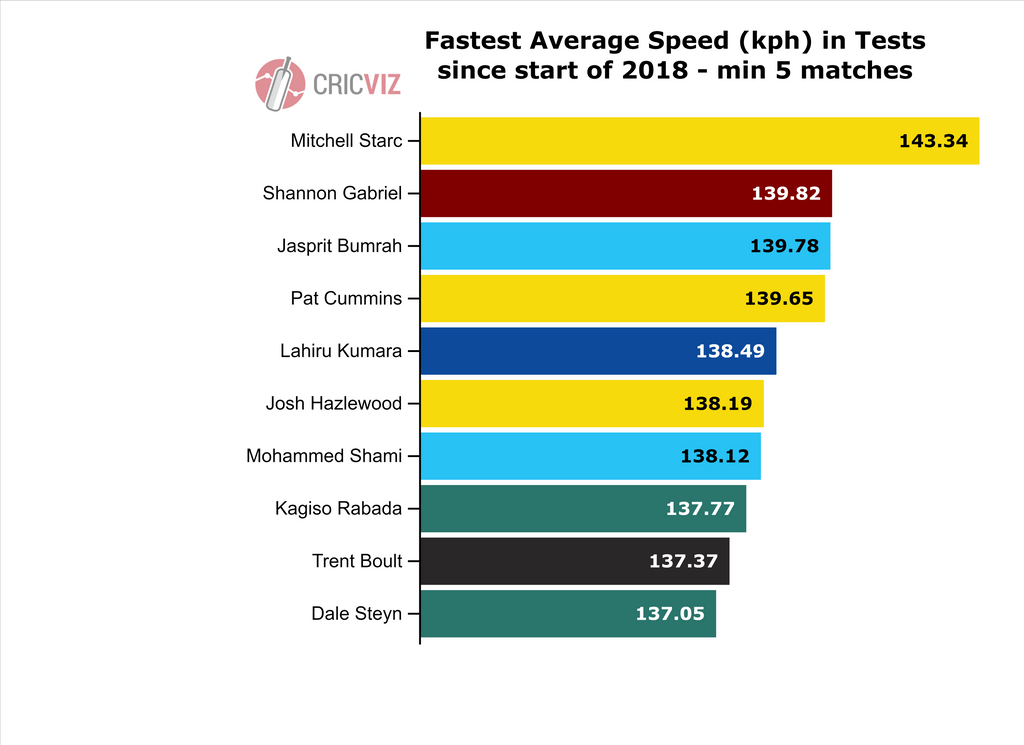
What’s more, he puts that pace into bowling wicket-taking deliveries; of the six seamers to appear for Sri Lanka in Tests over the last 12 months, Kumara has the lowest Expected Dismissal Rate (according to CricViz’s Wicket Probability Model). Lakmal may be a more rounded bowler, but Kumara has a very high ceiling.
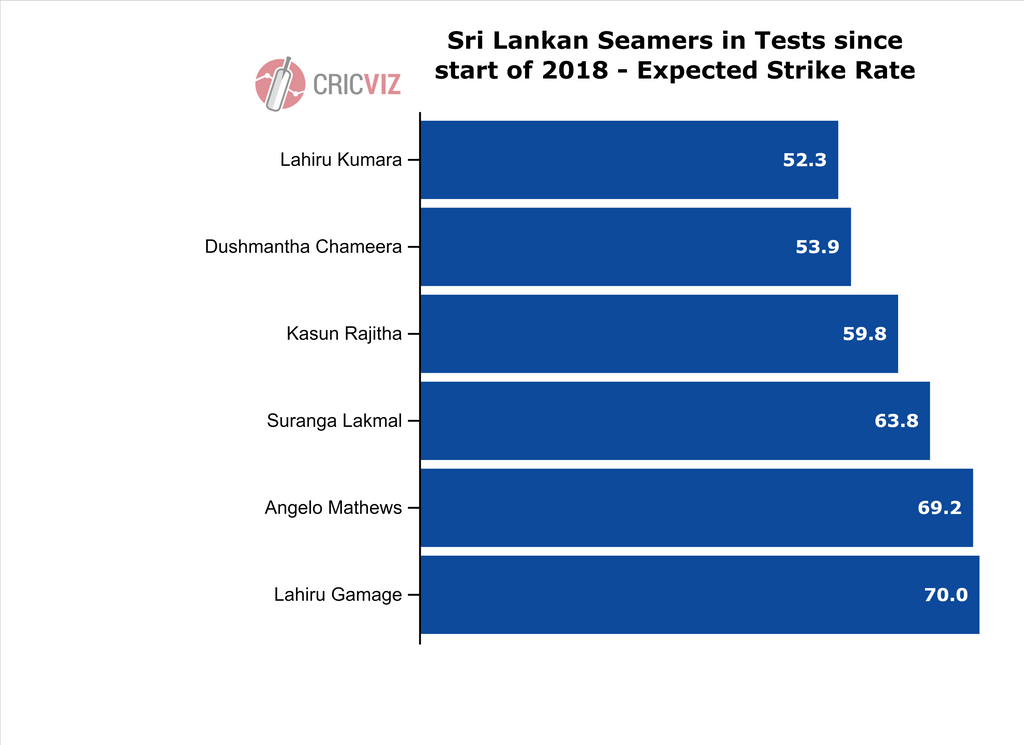
This relates to his bowling length because his extra pace gives him more options. It’s still statistically better to hit a good, in-between length, but the second best option is to bowl shorter, rather than fuller – the opposite of bowlers of Lakmal’s pace. This gives Kumara more tactical variation.

Spinners’ speeds
As an off-spinner visiting Australia, the key is your speed, because you have a tiny margin for error. It’s the Goldilocks conundrum – too hot, or too cold, and you’re in trouble.

Nathan Lyon understands this. For the last five years 58 per cent of his bowling in Australia has been in that middle bracket. He has adapted his bowling to suit the conditions he plays in most – but it’s taken time, and Sri Lanka’s spinners need to go through this process inside a month.
Dilruwan Perera is the most suited to bowling this pace – across his career 45 per cent of his deliveries have fallen into that speed bracket. However, whereas Lyon uses the slower ball as a rare variation (just 11 per cent of his bowling at home is slower than 83kph), Dilruwan drops below 83kph with 48 per cent of his deliveries.
Clearly that is a product of his home conditions, but it’s a big mechanical switch to suddenly remove those deliveries from your game. It could be even more of an issue for Dhananjaya de Silva, who has bowled 68 per cent of his career deliveries at that speed.
However, if that speed issue can’t be resolved through coaching, there is a tactical way out. If you’re going to bowl that slowly, then you cannot get drawn into thinking you can toss it right up and beat the batsman above the eyeline. It’s counter-intuitive, but it’s the case. For spinners, it’s not a binary issue of being allowed to pitch it up more the slower you bowl – the slower you are, the more accurate you have to be.

Attacking the new ball
One of the few areas in which Australia were better than India was in their new-ball bowling. Despite India’s superior opening batsmen, Mitchell Starc and Josh Hazlewood consistently took wickets and outperformed their opposite numbers.

Thus, the absence of Hazlewood for this series is significant. The New South Wales seamer has taken the new ball in 72 of the 82 innings in which he’s bowled for Australia, and he leaves a hole in the attack that needs to be filled.
There has been talk this summer that Pat Cummins deserves a shot with the new ball – he’s taken it just nine times in 33 Test innings – but it was largely suggested that he replace Starc, not Hazlewood.
 Will Pat Cummins be given the new cherry against Sri Lanka?
Will Pat Cummins be given the new cherry against Sri Lanka?
You’d imagine that Paine and Justin Langer will be reluctant to open up with the relative inexperience of both Cummins and Jhye Richardson, so it’s likely Starc will retain his spot with the new ball. An out-of-form bowler and one newbie will begin proceedings for the hosts.
So, Sri Lanka need to go hard at Starc, because he’s vulnerable. Since the start of 2018, attacking shots against the left-armer’s new-ball deliveries have averaged 69.50, leading to a dismissal every 45.5 shots. As shown below, that is a worse record than most established bowlers.
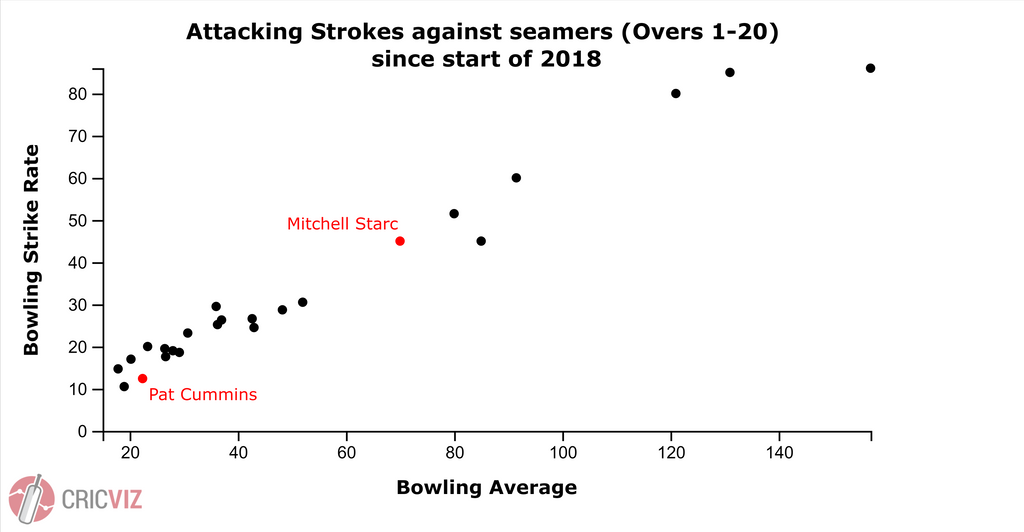
Yet, as you can see, Cummins has a great record in this regard – an attacking shot against him is very likely to bring a dismissal. As such, Sri Lanka’s openers need to be willing to go after Starc, given it will make it easier to soak up the pressure from Cummins at the other end. If you lose wickets to Starc early on when trying to punish the bad balls, you shouldn’t worry – it’s the prudent approach.
This should inform Sri Lanka’s selection because to execute this strategy, Karunaratne needs a stroke-maker alongside him. In the practice game against the Cricket Australia XI, the visitors opened with Lahiru Thirimanne, a man who has played 29 Tests and averaged 23.56 – hardly world-beating. What’s more, he’s rarely been fluent at Test level, playing just 18 per cent attacking shots – not exactly a man well-suited to an aggressive strategy.

A far better option would be to promote Dhananjaya de Silva. Despite never opening in Tests, Dhananjaya has opened on 57 occasions in first-class cricket, with an average of over 40. More significantly, he is perfectly suited to the role of taking on the new ball. He has has the highest average with attacking strokes of anyone in the Sri Lankan squad, as well as the best dismissal rate. Given that other more traditional opening candidates have clear issues at this stage (Sadeera Samarawickrama averages just 8.62 against pace bowling in Tests), a bold decision is required.
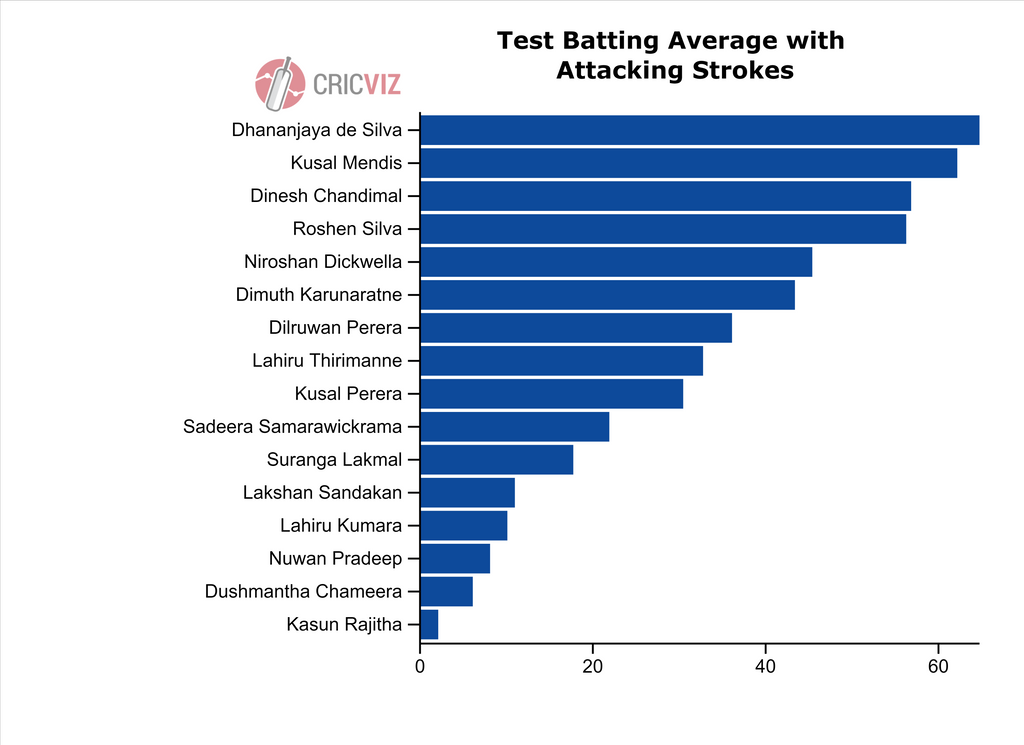
Using your feet against Lyon
Disrupting Nathan Lyon is hugely important for any side facing Australia. Within Paine’s bowling quartet, Lyon bowling lots of economical overs is fundamental – if Lyon can’t bowl, the knock-on effects are severe, forcing the fragile Starc and Cummins into lengthier spells.
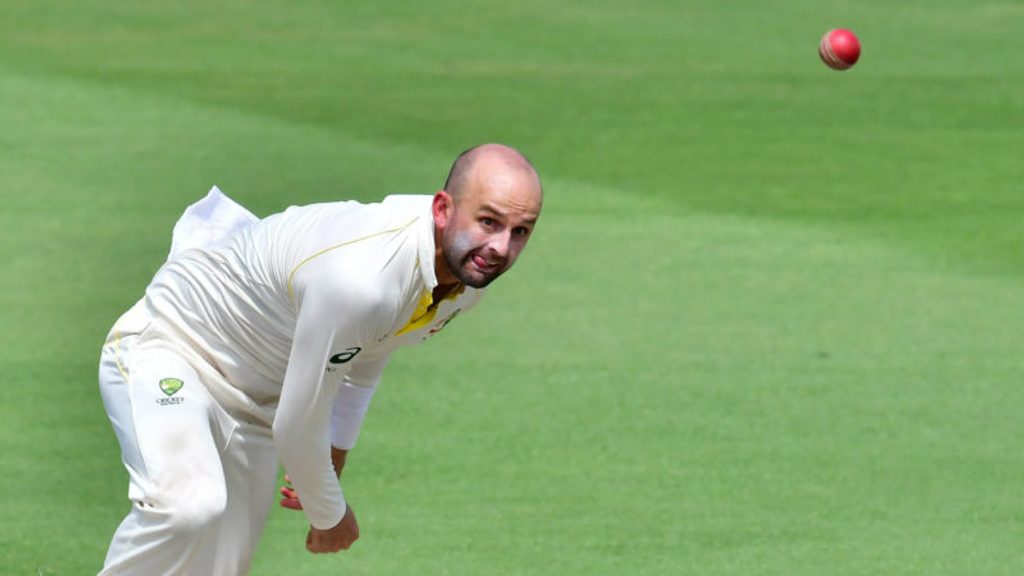 There aren’t many better off-spinners than Lyon, but stats suggest you should use your feet against him
There aren’t many better off-spinners than Lyon, but stats suggest you should use your feet against him
The key to playing Lyon in Australia is to come down the track. Across his career, batsmen coming down to Lyon average 32.29. His overall average in Australia is 33.31, so it’s not more effective in a purely numerical manner, but the scoring rate for these shots is 7.06rpo. This puts Paine in a difficult situation. With the likely absence of an all-rounder other than Travis Head, Lyon is Paine’s only relief option. He has to make a call – wait for the breakthrough, or take Lyon off.
What’s more, this tactic naturally suits Sri Lanka. Their batsman come down the track more often than most – as shown below. What’s more, the average in Sri Lanka is to come down to 8.5 per cent of deliveries, so this isn’t a measurement informed only by home conditions. This is a group that have the natural inclination to play in this manner.
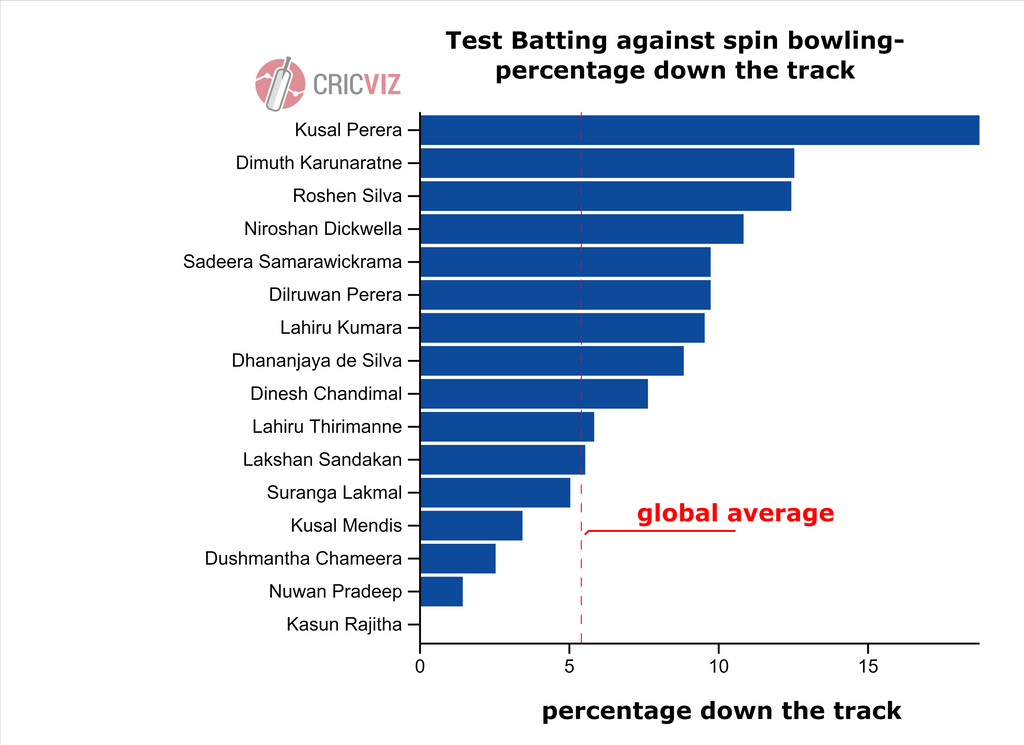
Conclusion
Sri Lanka have a chance – but that’s all it is. If they have good plans and execute them well, Australia may not be strong enough right now to resist. However, the hosts are still likely to come out on top – the absence of Angelo Mathews may come to be crucial both in terms of batting heft and bowling depth, and Langer’s revamped squad may just be fresh enough to allow them to move on from the India defeat.
Regardless, Sri Lanka should go into this series believing that the smash ‘n’ grab is on – because right now, everything in Australia is up for grabs.








